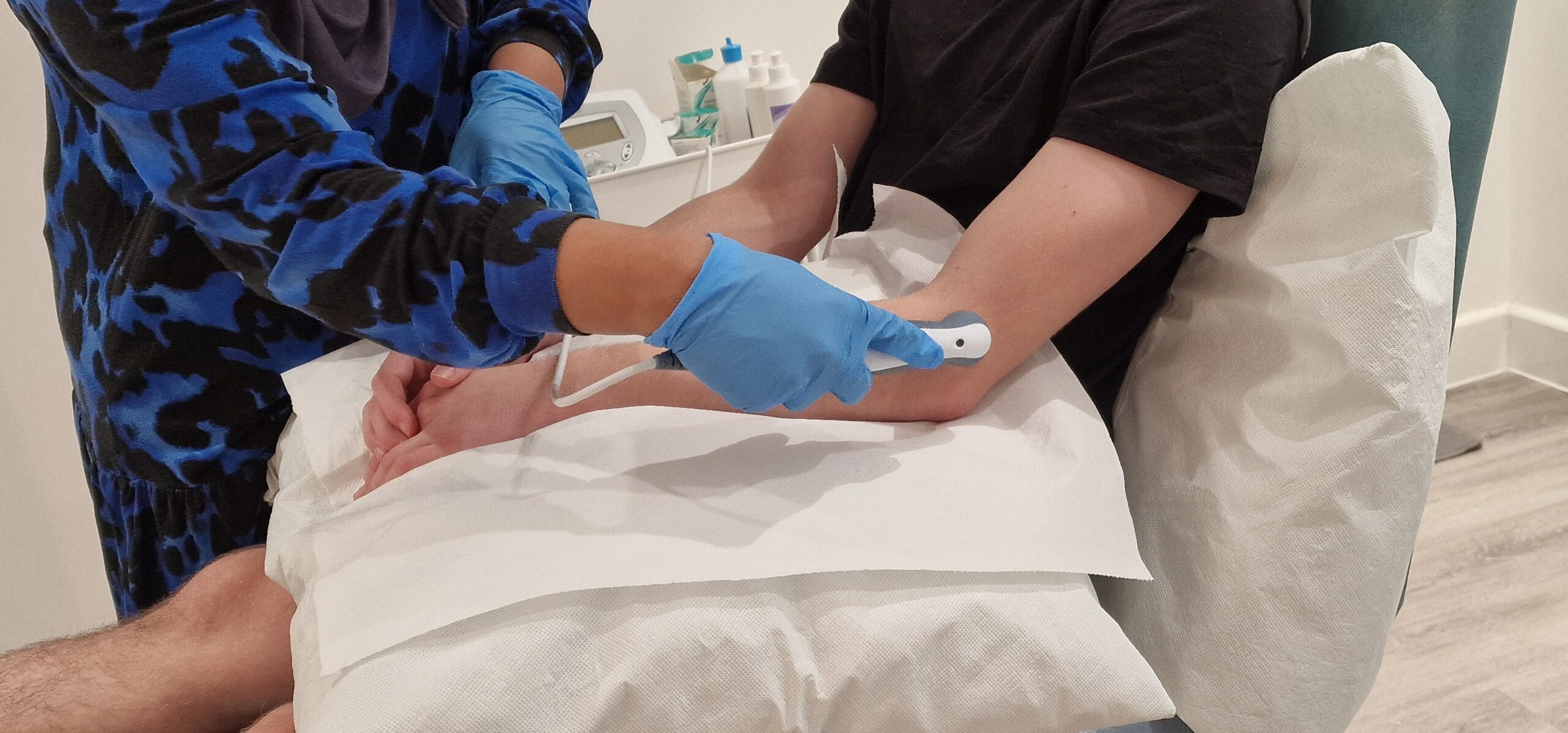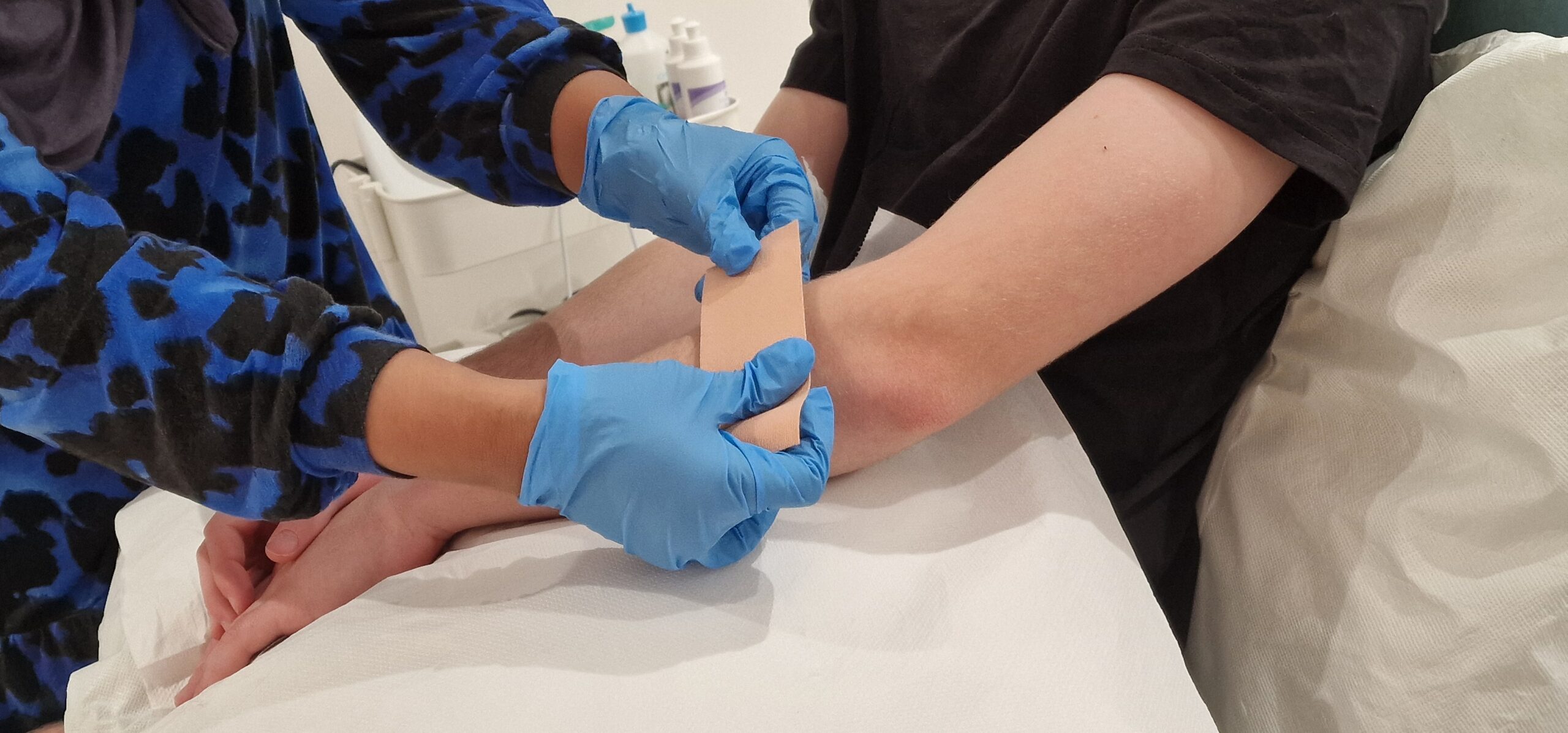Lateral Epicondylitis Or Tennis Elbow

Lateral Epicondylitis Or Tennis Elbow
Not every painful elbow is a “tennis elbow” but this is one of the most common diagnosis. This presents as pain starting at the bony lump on the outer aspect of the elbow and can radiate into the forearm. Despite its name ,it can be caused by daily repetitive movements and strains of the forearm muscles involving hand gripping, that is why it can affect people performing sports like tennis or baseball but also professional like mechanics, butchers, chefs, carpenters or musicians.
It is most common in people 30 to 50 and affects all genders.
The root cause of this debilitating condition can be found in weak and tight extensor muscles in the forearm. The weaker or more tired the muscles are, the more load and strain they will place on the tendon. Sometimes it can be caused by a sudden arm or elbow injury, more rarely for no known reason (idiopathic tennis elbow).
The signs and symptoms of the tennis elbow include:
- Burning and dull pain on your outer elbow (also at night in the acute phase) that may travel to the wrist
- Pain when twisting or bending your arm (open a jar, turn a doorknob)
- Stiffness and pain when extending your elbow
- Swollen elbow joint, tender to touch
- Weakened grip when you try to hold items like pans and racquets.

How We Can Help
After the initial acute phase, the recovery may take up to 18 months, that is why it’s important to start your therapy as soon as possible, as there are proven nonsurgical techniques that can accelerate the recovery, like physiotherapy.
At our clinic, after the initial assessment to rule out other possible conditions, our experienced physiotherapists will tailor your treatment to your specific needs. A Chartered Physiotherapist has an extensive tool-box of methods to utilise such as hands-on techniques (manual therapy), ultrasound, acupuncture (needle, laser or electric) and strapping/taping.
Alongside the above treatments, a progressive strengthening/stretching program will be prescribed to help improve strength and reduce muscle tightness. The above factors are crucial to every patient’s recovery and in avoiding recurrence of your condition.